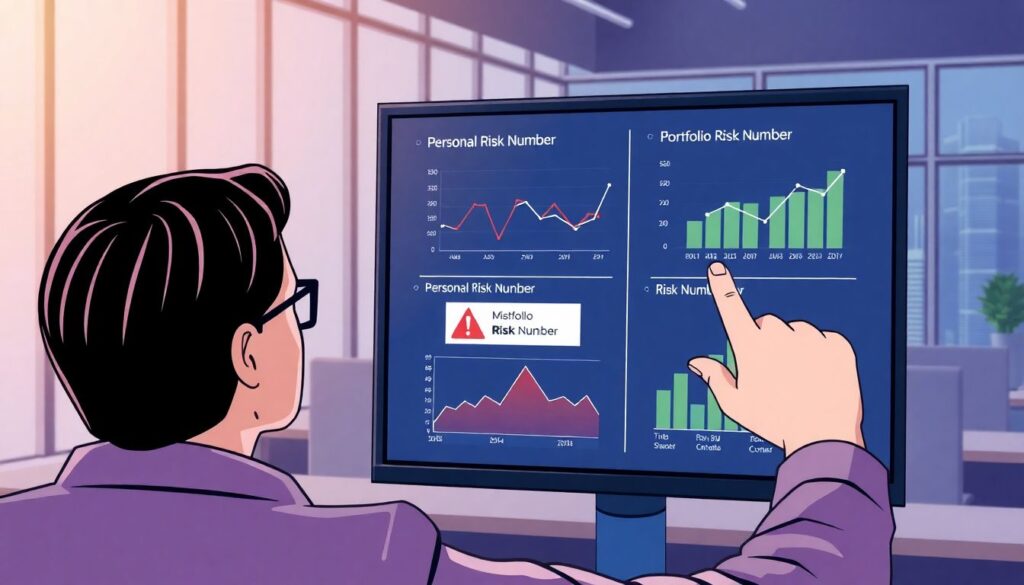Understanding Riskalyze: Aligning Your Portfolio with Personal Risk Tolerance
Riskalyze is a digital platform designed to quantify an investor’s risk tolerance and align it with their portfolio construction. At its core, it uses a patented Risk Number®—a scale from 1 to 99—to clearly define how much risk you are comfortable taking. This allows individual investors and financial advisors to calibrate portfolios so that expectations and reality remain in sync, even during market volatility. Before diving into portfolio adjustments, it’s crucial to accurately assess your personal risk profile using Riskalyze’s guided questionnaire. This not only evaluates your comfort with loss but also takes into account your goals, time horizon, and financial situation.
Step 1: Define Your Risk Number
The first step in calibrating your portfolio risk is obtaining your Risk Number. Riskalyze’s questionnaire asks a series of scenario-based questions that quantify how much risk you’re willing to accept for a potential return. These questions are rooted in behavioral economics and simulate real market outcomes to measure emotional thresholds. It’s essential to answer these questions honestly. Overstating your tolerance could lead to higher exposure than you can emotionally handle in downturns.
Tips for Accuracy:
– Don’t answer based on ideal outcomes; think about worst-case scenarios.
– Consider your investment horizon—longer timelines typically tolerate more risk.
– Be aware of emotional biases, such as recency (recent market gains or losses swaying your answers).
Step 2: Analyze Your Current Portfolio Risk

Once you’ve defined your Risk Number, the next step is to assess if your current portfolio aligns with it. Riskalyze allows you to input your holdings and calculates a portfolio-level Risk Number. If there’s a wide gap between your personal number and your portfolio’s, it’s a red flag. This indicates either overexposure or underexposure to risk, both of which can lead to poor investment behavior—panic selling or missed opportunities.
Common Misalignments:
– Portfolios built without a clear risk strategy often skew too conservative or aggressive.
– A mix of individual stocks without diversification can distort perceived safety.
– Target-date funds sometimes misalign due to assumptions about age-based risk tolerance.
Step 3: Adjust Asset Allocation Accordingly
To bring your portfolio in line with your Risk Number, you may need to rebalance your asset classes. Riskalyze suggests model portfolios that match your risk profile, or you can manually adjust asset weights. The goal isn’t simply to reduce volatility but to match your psychological comfort with realistic expectations.
Expert Recommendations:
– Diversify across asset classes (equities, fixed income, alternatives) to spread risk.
– Avoid overconcentration in any single sector or stock, even if it’s performed well recently.
– Use ETFs and mutual funds that offer broad market exposure aligned with your risk level.
Warning: Don’t Chase Returns

A common mistake investors make is adjusting their risk upward after a bull run. Riskalyze provides historical stress tests that show how your portfolio would have performed in past downturns. Use these tools to resist emotional decisions. Chasing performance often leads to buying high and selling low—the exact behavior successful investors avoid.
Step 4: Monitor and Recalibrate Over Time
Risk tolerance isn’t static. Life events such as a job change, retirement, or major expenses can shift your willingness and ability to take on risk. Riskalyze encourages periodic reassessment, ideally once a year or after significant financial events. Re-running the risk assessment ensures your portfolio evolves in step with your life situation.
When to Reassess:
– After major market swings
– Following life milestones (marriage, birth of a child, inheritance)
– Changing retirement timelines or income sources
Step 5: Use Riskalyze for Behavioral Coaching
Beyond portfolio construction, one of Riskalyze’s powerful features is its ability to help manage investor behavior. Visual tools and historical simulations can help you stay committed to your long-term strategy. Advisors often use these features to reinforce discipline during market stress. When you see how a portfolio could have weathered 2008 or 2020, you’re more likely to stay invested through future volatility.
Behavioral Coaching Features:
– Visual loss/gain scenarios based on different market conditions
– Stress testing tools to simulate performance in past crises
– Alerts when current allocations drift from your Risk Number
Beginner Pitfall: Ignoring Rebalancing Needs
New investors frequently set a risk-appropriate portfolio and then forget to rebalance. Over time, asset classes perform differently, causing drift from your ideal risk allocation. Set calendar reminders or use automated rebalancing tools integrated with platforms like Riskalyze to maintain alignment.
Conclusion: Riskalyze as a Strategic Ally
Calibrating your portfolio using Riskalyze empowers you to invest with clarity and confidence. It bridges the gap between how much risk you think you can take and how much your portfolio actually carries. By using its data-driven insights, historical simulations, and behavioral tools, investors can build more resilient portfolios while avoiding emotional pitfalls. Whether you’re a seasoned investor or just starting out, integrating Riskalyze into your strategy ensures your risk exposure is intentional—not accidental.

